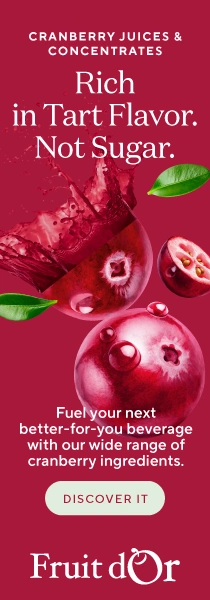FiE 2024 live: Cargill pushes plant-based boundaries with alt-meat portfolio featuring mycoprotein
The plant-based space is evolving rapidly, but to keep up with growing consumer demands, innovation needs to move beyond burgers, Kevin Lemeilleur, global meat & dairy alternative managing director at Cargill, tells Food Ingredients First at the ongoing trade show FiE in Frankfurt, Germany (November 19–21).
Plant-based alternatives continue to be a key area of innovation for global ingredients leaders. “If you step back five years, you saw a lot of innovation around plant-based alternatives.”
“However, not all the products were good, and consumers moved away,” notes Lemeilleur.
He adds that consumers leading plant-based lifestyles today have specific demands for themselves and the environment.
“Consumers are asking for a better product. They say, ‘It has to taste good, or I’m not buying it.’ Second, they want to see products that are more nutritious and also good for the planet, so sustainable. Lastly, they are asking for a product at the right price, which is important, especially in the current environment.”
“Fortunately for them, innovation has advanced during the past five years and product quality has improved significantly. And that’s what we are doing — helping formulate better products.”
Tapping mycoprotein
At FiE, Cargill is presenting the newest addition to its alt-meat portfolio, the “game-changer” Abunda mycoprotein, developed by its partner, Scotland-based food-tech company Enough.

The ingredient is derived from fermentation and is incorporated into a Thai-style veggie patty.
“Mycoprotein is an emerging ingredient bringing a lot of value to the market, especially with its meat-like texture, sustainability aspect and protein profile,” says Lemeilleur.
“It has a very clean taste, light color and a fibrous structure, which is very close to meat. It allows us to formulate whole-muscle chicken or fish alternatives, but can be used in many other forms, such as grinding it to make sausages or patties.”
 Mycoprotein presents an eco-friendly alternative to conventional meat.Cargill is investigating other potential applications of the ingredient, including dairy alternatives.
Mycoprotein presents an eco-friendly alternative to conventional meat.Cargill is investigating other potential applications of the ingredient, including dairy alternatives.
Healthy outcomes
With a renewed focus on sustainability, consumers’ interest and awareness of the origin of food ingredients is steadily increasing. Lemeilleur adds that Abunda can support healthy outcomes for consumers who want to optimize their food’s nutritional footprint while detailing its sustainability factor.
“The process of producing Abunda involves fermentation, a natural and simple method, similar to making beer or yogurt, for instance. We feed fungi with sugars from grain, using Cargill’s glucose syrup.”
“Abunda is a complete protein containing all the essential amino acids. It’s also rich in fiber, so it’s nutritious and can be used in many ways. The Thai-style patty has a simple and short list of ingredients and Abunda shows its versatility.”
“Since Abunda is made by fermentation, it all starts from the grain sourced sustainably by Cargill. Furthermore, Enough developed a unique technology to produce it at scale. The fermentation process runs continuously, so it’s efficient. We recycle all the water, leading to minimal waste. So it’s an ingredient with a very low carbon footprint and high feed conversion.”
Gains for confectionery
Meanwhile, Inge Demeyere, managing director of bakery, ice cream and confectionery at Cargill Food Solutions EMEA, highlights similar trends in a “dynamic” confectionery sector.
“Consumers are looking at conscious buying more. They look at what they want to eat and where it comes from. They also seek health and a nice experience. That’s why we are looking for future-proof solutions that are slightly different from what we have as traditional chocolate.”Inge Demeyere, managing director of bakery, ice cream and confectionery at Cargill Food Solutions EMEA.
The company is also presenting its vegan, nut-free, sugar-reduced confectionery alternative to chocolate at FiE in partnership with Voyage Foods. The ingredients can be used in bakery, chocolate confectionery, ice cream and cereals.
“If you think of chocolate, you think about cocoa, but Voyage Foods’ patented technology helps move away from traditional raw materials. Their process uses ingredients like grape seeds but ensures that the flavor of the traditional products is retained,” says Demeyere.
Innovation investments
Lemeilleur expects the plant-based space to evolve “even faster,” with enormous opportunities for manufacturers.
“We are seeing a lot of products in shops today — mostly burger patties. But we don’t eat burgers daily, so we need to see a greater variety of products. We’re already seeing the quality improve significantly.”
Cargill is also showcasing a mango-flavored drinkable alternative to yogurt made with pea protein, which aligns with the need to diversify protein sources.
“The need for protein is expected to rise by 70% in 30 years. That’s huge. Given the growing population and middle class, we will need to see more of this type of innovation.”
According to Lemeilleur, Cargill is “well-positioned” to support innovation with regional application centers and growing investment in start-ups to speed up emerging technologies and scale production in the next five years.
With live reporting from Joshua Poole and Missy Green at FiE 2024 in Frankfurt, Germany














